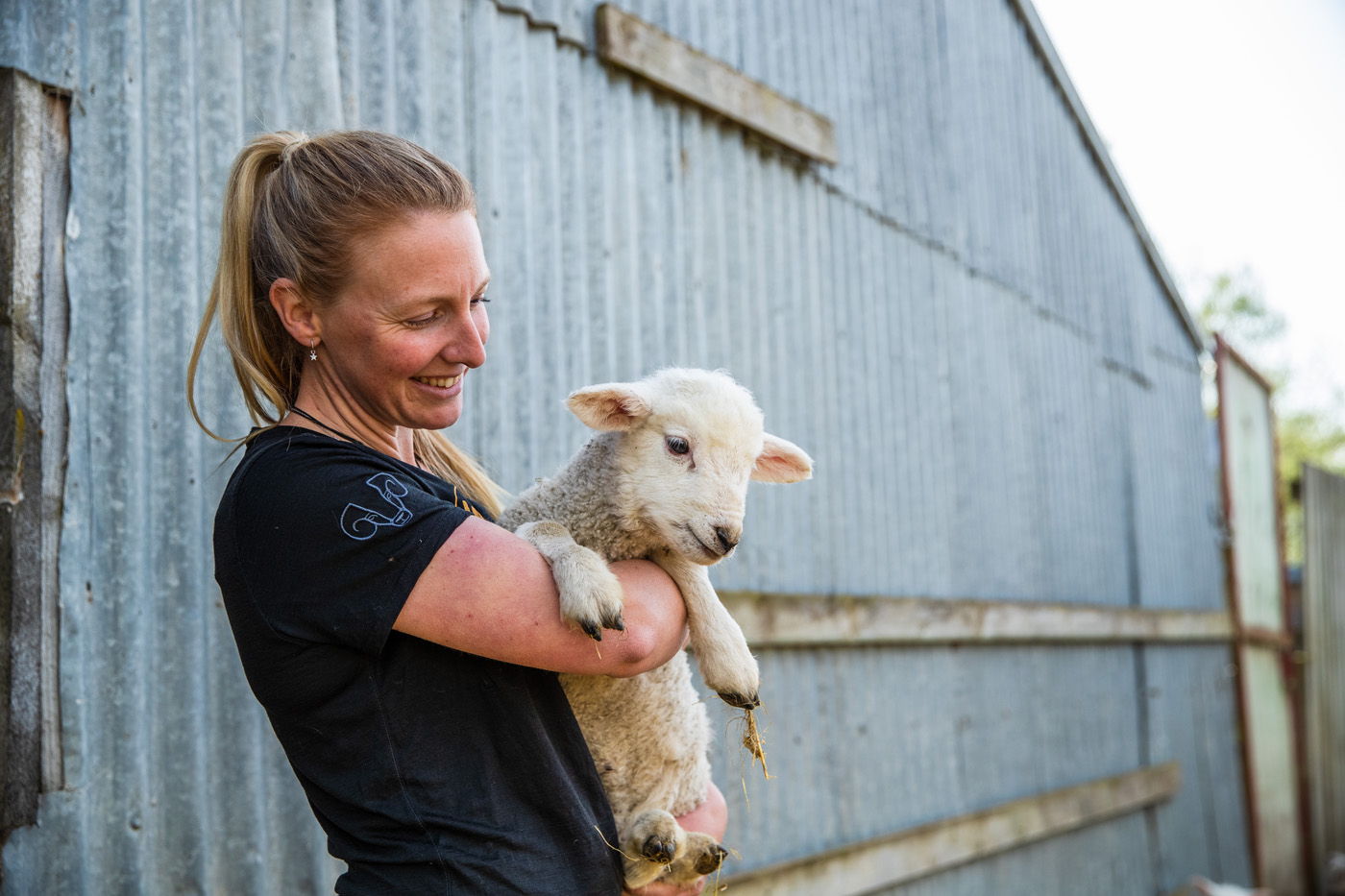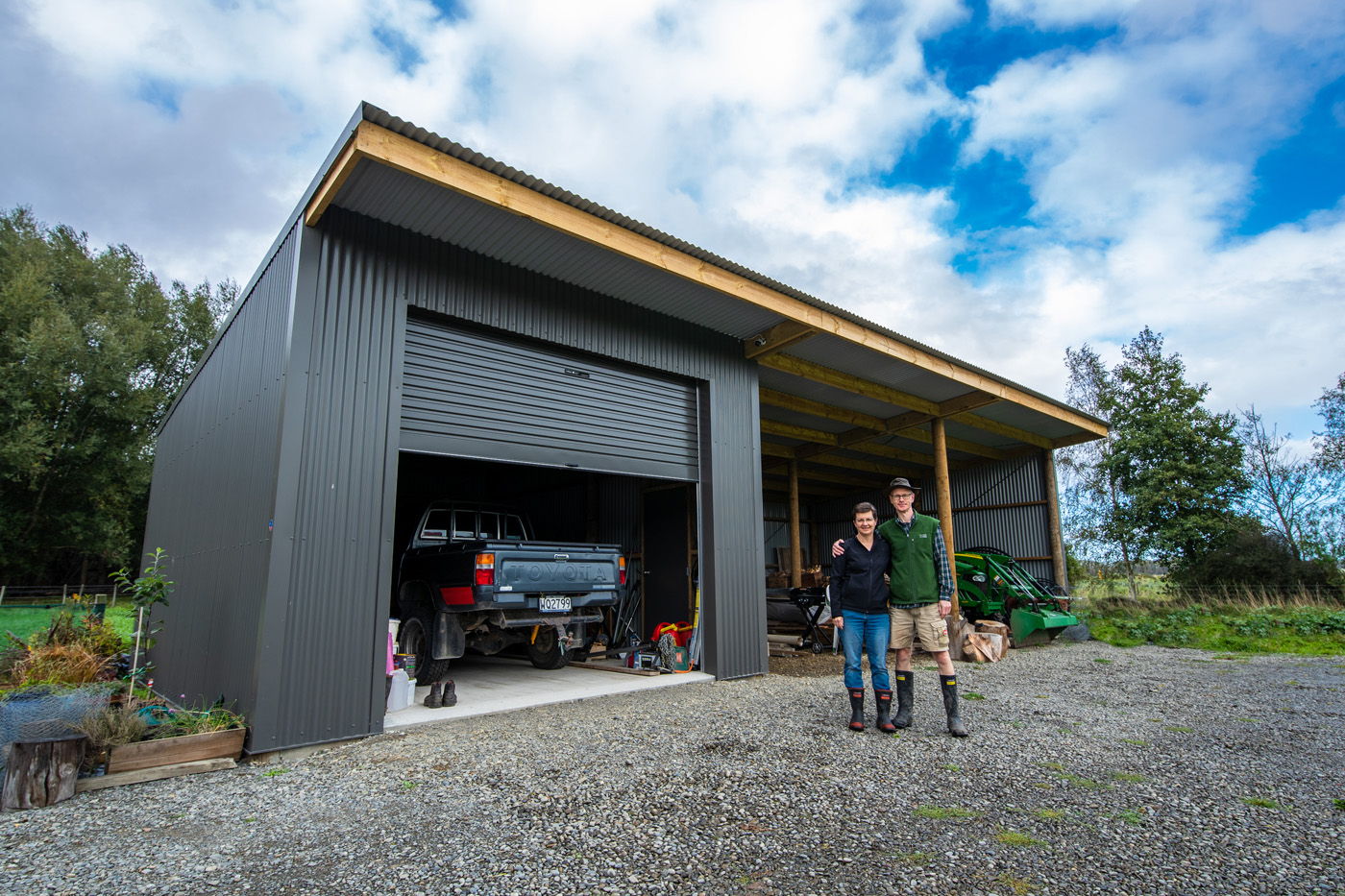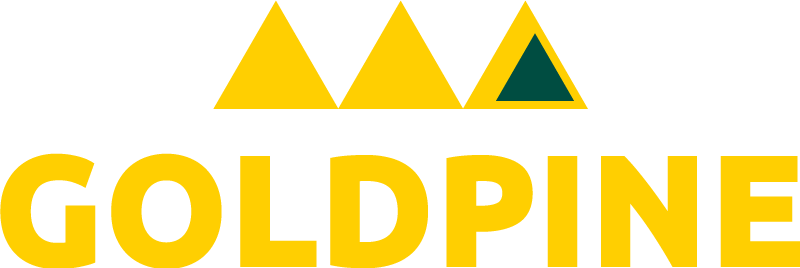Goldpine
The Company We Keep
Pride in Agriculture
As we start a new year, we’ve reflected on the work we do at Goldpine, the plans we’ve got and who and what our products are supporting. Every day we set out to produce the best natural products we can because they let you achieve your goals. From Cape Reinga to Bluff, you've carved out your piece of paradise with hard work. Any way we look at it, whether export earnings or quality of products, we're quite proud of the company we keep.
The origins of our business, and embedded in our DNA, is meaningful work with, and for, people. In 1977, the machine we now call Goldpine first sparked to life because a downturn in the silviculture industry meant a local crew had no work in front of them.
Starting from scratch with a determination to see some hard-working jokers get put to good use, our story began. There were forest owners looking for customers and farmers looking for posts, so it made sense for us to at least have a crack. It’s been a bumpy road along the way, but the people, the work and the sheer willingness to try have kept us going.
You’ll have noticed we’ve made a few changes lately; we’re updating the Goldpine brand to better reflect who we are and what we believe in. Perhaps unsurprisingly, we’ve been asked quite a few times lately why we go to the effort of telling your stories each month. Well, for one, we love hearing them. But in large part, it’s because a business is the sum of its relationships and we couldn’t pick a better bunch of people to work with, that is our customers, even if we tried. So, this month and every month after that, we’ll take the time to point out just some of the value we see in what you do, because it’s who we work with that gets us out of bed each morning.

PAYING OUR OWN WAY
We’ve pointed out before that the primary sector has been an export earnings powerhouse for a long time, at last measure accounting for around 82% of merchandise exports. In the same way a household needs an income to cover its expenses, a country needs exports to fund its imports. If your imports exceed your exports over the long term, you effectively run up a tab with the rest of the world that is due at some point; lucky for us, that’s where you step in. At the base level of competitive economics is the idea that each person or country should specialise in the areas where they have an advantage. Rather than be the "master of none", become the "expert in some". The idea is that we all mutually benefit from efficiency and quality gains through specialisation and focus.
The Germans got good at engineering; London has been the heart of global finance and Taiwan produces the world’s best computer chips. New Zealand has a powerful combination of geographic advantages and a deep bench of talent in our rural communities, which has set us up to be the world’s best. It is this combination that leads us to produce enough food for 40 or 50 million people, well in excess of what we need domestically, so we provide the international marketplace with a resilient, high-quality source of food and fibre. What do we get in return? In essence, in 2021 it took just the top eight primary exports to pay for the top ten imported goods. We swap what we’re best at for what the rest of the world produces. So, if it weren’t for our rural sector, we might find it challenging to pay for the vehicles on our roads or the fuel that goes in them. Machinery imports would also be hard to come by. We might be left without steel, iron or furniture. To keep the doctors at bay, we’d have to load up on apples instead of importing pharmaceuticals or optical, medical and measuring equipment. It’s the basket of primary exports we produce that pays for the basket of imports we need.
You can see how we’re getting on over the longer term by looking at New Zealand’s terms of trade. In a general sense, from the 1950s to the turn of the millennium, the terms of trade had a bit of an awkward slide down. However, for the past 20 years, you've set records and it’s up and to the right. A report by Treasury in 2015 explained that “New Zealand is a small, open economy that relies on its external sector as a source of economic growth and development” and that terms of trade are a key economic indicator.
As it’s been on an upward march, it's taking fewer exports to pay for our imports. Put another way, the world has valued our exports relatively higher (and why wouldn’t they?). Time and time again, a mixture of commentators and the odd politician have tempted fate by referring to the rural sector as a "sunset industry". In response, you’ve sharpened your pencil, grown and brought the receipts. We’ve all benefitted, not just with a full plate but with all the other stuff to go with it.
FOOD FOR THOUGHT
Hans Rosling has written a popular book, "Factfulness: 10 Reasons we’re wrong about the world – and why things are better than you think". It’s a book about the world, how to understand it and how we’re programmed with particularly negative assumptions. Factfulness opens with a multiple-choice questionnaire about some core global statistics along the lines of trends in extreme poverty, trends in life expectancy and global access to electricity or schooling. His research found, on average, that people get just two out of 12 answers correct. Quite humorously he then points out, if he threw three bananas at a chimpanzee (with each banana representing one multiple-choice answer) they would have done better at four out of ten. The punchline: people defaulted, systematically, to the more negative (but wrong) answers. Turns out the world is making better progress on some critical issues than most people think. We recently came across one statistic that fits nicely into Rosling’s line of thinking – global undernourishment as a percentage of the population. It’s an area you’d desperately hope to see improvement in, but it wouldn’t happen by accident. So, what did we find? Since the year 2000, globally, it has fallen from 13.10% to 9.30% in 2020. If we hadn’t made any progress on this metric with population growth, there’d be 311 million more undernourished people today but, because we have, there are 80 million fewer! Obviously, any number is going to be too high, but it’s pleasing to see some genuine progress here. It’s estimated that in developing countries, this has dropped from nearly 35% of the population in 1970 to 12.9% more recently. It’s simply a staggering progress.
But how did we get here? It’s the result of dual progress made with food production methods and global trade. The United Nations recently put out a new study ‘More Fuel for the Food/Feed Debate’ with a couple of statistics that made our jaws drop. Livestock farming utilises land, two-thirds of which is not suitable for growing anything else; and consumes feed, 86% of which is not suitable for human consumption. The kicker was that grazing cattle only require 0.6kg of protein from edible feed to produce 1.0kg of protein in the form of meat or milk; Accounting for “18% of global calories, 34% of global protein… these grazing systems contribute directly to net global protein availability”, something we had to read twice. What a machine!
Going the next step, primary producers have tirelessly expanded, developed, researched and tinkered. If there’s a way to produce more or produce better, you’re actively looking and Kiwi producers are blazing a path forward like no one else. It’s a combination of improved genetics or new varietals. It’s precision agriculture and new practices. You’ve sat out in the field a thousand times and wondered “what if I give this a go?”, and over the years the millimetres of improvement have added up to a mile. Forty-four per cent higher lamb weights over 40 years? No problem. Fifty per cent more apples per hectare than the next best country? You bet. Thirty-eight per cent more milk solids per cow over two decades? Business as usual. World record yields of wheat per hectare. What’s next?
The undernourishment metric refers to “a diet which is both sufficient in terms of energy (caloric) requirements and diverse to meet additional nutritional needs”. Making Meat Better refers to lean red meat as "nature’s powerpack – delivering a lot, in a little". Pound for pound, it is absolutely stacked with protein, amino acids, vitamins and minerals, especially when it’s grass-fed. In similar ways, so are many of the other Kiwi primary exports. Avocado? Powerpack. Kiwifruit? Powerpack. Dairy, apples and honey? Powerpacks. In the global hunt for diverse calories, you’ve fronted up enough for 40 or 50 million people. On the global stage, where it matters, you’ve moved the needle in the right direction. Your produce turns up with better nutritional metrics, lower footprints, and the world’s better off for it.
Global food security and the reduction in global undernourishment, fragile as it is, have been hard won and while there’s still a long way to go, you can be proud of the part you’ve played.

THE NEXT FRONTIER
If you’ve ever come across the phrase "the science is settled", you can respectfully disagree; science is an ever-expanding frontier. Humanity has always strived into the unknown, discovering how things work or what’s on the other side, and we’ve certainly proven ourselves wrong a few times (the centre of the universe has moved from the earth to the sun, to… somewhere else). There are some well-known new frontiers in research like Artificial Intelligence, the depths of space or the ocean, but there’s also some important research into areas less well known, like the biome; one in the gut and one in the soil.
In the gut, it’s a community of microorganisms that live in the digestive tract and help break down food, extract nutrients and support the immune system. Similarly in the soil, it’s a community of microorganisms that play a key role in maintaining the health and fertility of the soil which helps break down organic matter, releasing nutrients that plants can use for growth. When both are healthy, they can protect against harmful microorganisms.
Researchers have recently suggested we should even “consider the human intestinal microbiome as well as the soil/root microbiome as ‘superorganisms’ which, by close contact, replenish each other with inoculants, genes and growth-sustaining molecules”. So, not only does soil feed the gut with the food it produces, it may even be important to be in regular contact with it.
In one of his books, Nassim Taleb popularised the term "Skin in the Game". He explains why skin in the game (exposure to risk) is a critical part of decision-making; you need to be invested in the outcome and if you are, you’re forced into a pretty clear-eyed assessment about what works and what doesn’t. So, the research seems to suggest that a healthy soil microbiome is more productive and produces higher-quality food, leading to better nutritional metrics and better outcomes for consumers. It’s also starting to look like a soil microbiome firing on all cylinders eats up atmospheric carbon like nothing else.
Ok, great. So, who’s more invested in the top six inches of topsoil than a farmer? No one, because it affects everything you do, every day. You’re in the business of growing healthy topsoil and if the topsoil is growing healthily, getting deeper and getting darker, it may represent carbon dioxide being vacuumed out of the atmosphere. As if by magic, grass creates carbohydrates out of thin air (photosynthesis) and feeds the backs in a complex underground ecosystem. Bill Gates has been investing tens of millions into breakthrough carbon capture technology, targeting costs of $50 per tonne – maybe he should just give you a call.
Research has lately come around to the idea that there is likely a direct link between the levels of biomass/activity above ground with the level of biomass/activity below ground. As it may turn out, rotationally grazing livestock might be a method to turbocharge the below-ground life and nutrient cycle. We’ve said this in the past, admiring Allan Savory’s work across Africa, livestock grazing rotationally may be a massive opportunity to sequester carbon below ground. In doing so, you’d be growing the potential beneath your own feet. Just for a moment, imagine the country setting a moonshot goal of sequestering carbon by growing topsoil over the next generation. What would we get in return for the effort?
The entire country could be net carbon neutral over that period, farms could become more drought resilient and more productive, and the country’s primary exports could likely explode. You have skin in the game here and you know what works. The research just needs to wrap around and support what you do best – there’s probably no other policy worth more attention. Perhaps we shouldn’t be aiming at doing less but a lot more. That’s not to say it’d be easy but, like the original moonshot, we could set goals such as these “not because they are easy but because they are hard”. It seems the research into the soil microbiome has only just scratched the surface, but we like what we see here. It could set out a pathway to a remarkable future and we’d be the least bit surprised to find you were already on it.
THE ROAD AHEAD
On our travels across the country over the years, we’ve come across a diverse range of stories. Amongst the vines, deer, cattle and hay, the common thread that runs through each story is refreshingly simple; you love what you do and you’re proud. Every day will present a new set of challenges and sometimes it’ll seem like the rain won’t stop going sideways, but the results of putting one boot after the other are undeniable; economically we’re better off , globally we’re better fed and environmentally the sky may be the limit. There’s quite a lot to be proud of.
When we do interviews, to get the best photos of your property we can, we often ask “can you take us to your favourite spot?” and before we have the chance to blink, we’re whisked away. As a careful steward of your stock, your crop or your plot, you know exactly where to take us. The sense of pride runs deep, and it resonates.
Throughout Goldpine's history, we’ve spent some time trying new things and we can tell you not all of them have worked, but we’ll keep trying anyway. Whether building new equipment, a new product or a brand, it was you standing alongside us, willing to give our products a go that kept us moving forward. The business is what it is, we are who we are because we stand on the shoulders of giants: our customers. And for that reason, we will continue to fl y your flag.
We feel an enormous sense of pride as we drive across an ever-changing countryside of rolling green pastures, alpine high country, rocky flats, fields of crops and rows of hops. As we pass by, we see our products being productive, forming a small part of the success story that is the Kiwi primary producer.



.jpg)
.jpg)
